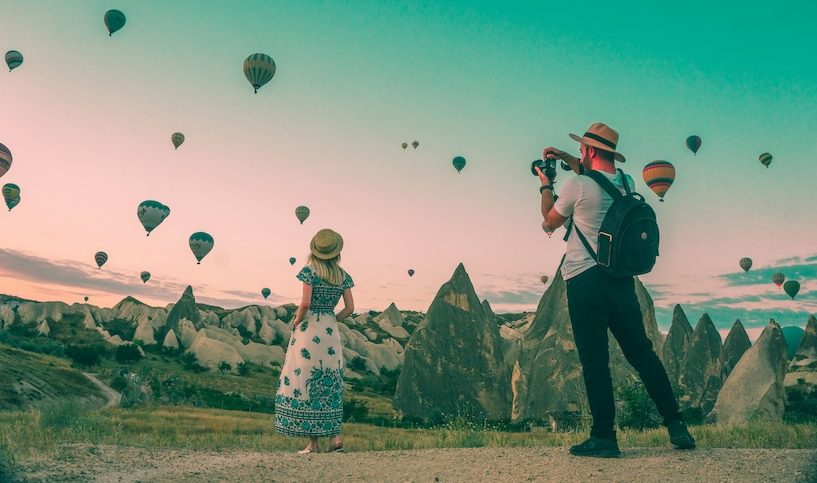In an age where social media floods our feeds with curated travel snaps and neatly packaged itineraries, it’s tempting to think that visiting a place is simply about ticking off the “must-see” list. But as the late Anthony Bourdain wisely said, “Travel isn’t always pretty. It isn’t always comfortable. Sometimes it hurts, it even breaks your heart. But that’s okay. The journey changes you; it should change you.” The difference between being a tourist and a traveler lies in embracing the discomfort and depth of truly connecting with a destination.
Authentic exploration isn’t about the number of places you visit—it’s about the quality of the experiences you have and the connections you make. Here are practical ways to shift your perspective from tourist to traveler and create meaningful, memorable journeys.
1. Do Your Homework, but Leave Room for Serendipity
Planning is essential, but over-scheduling can turn your trip into a rigid checklist. As travel writer Pico Iyer says, “A person susceptible to ‘wanderlust’ is not so much a seeker after gold as a lover of leaving.” True travel involves embracing the unknown. Learn about the history, culture, and language of your destination before you go, but leave space in your itinerary for unexpected detours and discoveries.
For example, instead of booking back-to-back museum tours, spend a morning wandering a local market or sitting in a quiet café observing the rhythm of daily life. These moments often reveal more about a place than its most famous landmarks ever could.
2. Stay Curious and Listen More Than You Talk
To travel authentically, adopt the mindset of a learner. Approach people and experiences with curiosity and humility. Ask open-ended questions, and genuinely listen to the stories of locals. As Elizabeth Gilbert writes in Eat, Pray, Love, “You’re going to have to learn how to talk to strangers. It’s not scary. It’s an adventure.”
Start small. Strike up a conversation with a vendor, a taxi driver, or a fellow diner. Their perspective on life in your chosen destination will likely offer insights far richer than any guidebook. Listening also shows respect and fosters genuine human connections, turning your journey into a shared experience rather than a solitary one.
3. Choose Local Over Convenient
When it comes to food, accommodations, and experiences, prioritizing local businesses not only supports the community but also offers a richer, more immersive experience. Skip the international coffee chain and try the neighborhood café. Instead of staying at a big-name hotel, book a locally owned guesthouse or homestay.
By doing this, you’re not just consuming a destination—you’re participating in its economy and culture. As Alain de Botton notes in The Art of Travel, “Journeys are the midwives of thought.” Experiencing life as locals do often sparks moments of reflection and growth.
4. Learn (and Use) a Few Words in the Local Language
You don’t need to be fluent to make an effort. A simple “hello” or “thank you” in the local language can go a long way in building rapport and showing respect. It’s a small gesture that often opens doors to warmer interactions and greater understanding.
Even if your pronunciation isn’t perfect, locals will appreciate the effort. As Maya Angelou said, “People will forget what you said, people will forget what you did, but people will never forget how you made them feel.” Your attempt at their language demonstrates kindness and respect—two universal values that transcend borders.
5. Respect the Culture and Environment
Being a traveler means recognizing that you are a guest. Research local customs and traditions to ensure you’re behaving respectfully. Whether it’s dressing modestly in religious sites or following proper dining etiquette, these small acts show appreciation for the culture.
Environmental respect is equally important. Avoid single-use plastics, support eco-conscious tour operators, and be mindful of your impact on natural sites. As travelers, we’re stewards of the places we visit, and it’s our responsibility to leave them as beautiful as we found them—or better.
6. Embrace Slow Travel
Rather than racing to cover multiple cities in one trip, consider spending more time in fewer places. Slow travel allows you to truly soak in the essence of a location. Wander without a set destination, linger over meals, and savor the details—from the scent of fresh bread in a bakery to the way light falls on a cobblestone street.
Slow travel also reduces the environmental footprint of your journey and fosters a deeper appreciation for the place you’re visiting. As Jack Kerouac said, “Live, travel, adventure, bless, and don’t be sorry.”
7. Reflect on Your Journey
Travel is as much about inner exploration as it is about external discovery. Take time to journal or simply reflect on your experiences. What surprised you? What challenged you? How has your perspective shifted? This process not only deepens your appreciation for the trip but also allows the lessons you’ve learned to shape your everyday life.
The Traveler’s Mindset
To be a traveler, not a tourist, is to engage with the world in a way that’s curious, open, and respectful. It’s about looking beyond the surface and seeking to understand the heart of a place and its people. So, on your next journey, remember the words of Rolf Potts from Vagabonding: “Travel is not about covering distance—it’s about diving into the depth of a place.”
By embracing this mindset, every trip becomes more than a destination—it becomes a transformative experience.
Photo by Mesut Kaya on Unsplash.










